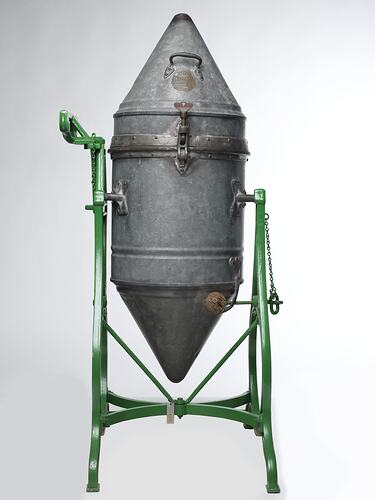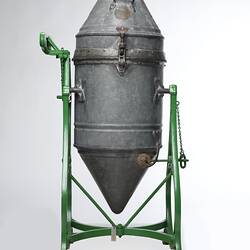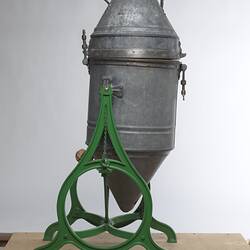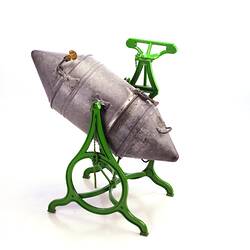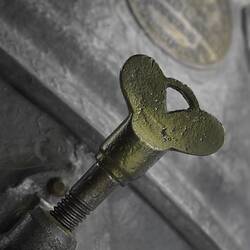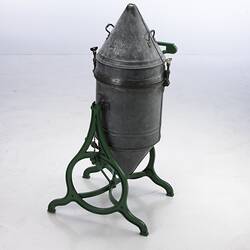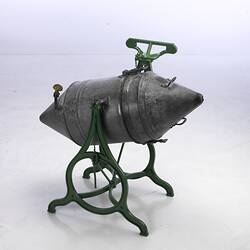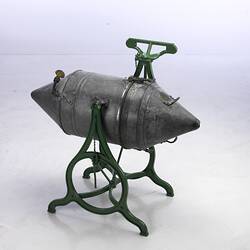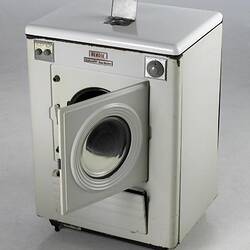Summary
Wolter and Echberg compressed-air washing machine, manufactured by Friedrich Wolter and Hans Echberg, of Russell Street in Melbourne, between 1877 and 1889. It was donated to the Museum by Charles Batten in 1967.
This is an early example of a mechanical object designed to minimise the drudgery of washing clothes. The machine, with its distinctive 'rocket' shape, is made of galvanised steel and sits on a four-legged iron frame. The manufacturers, Friedrich Wolter and Hans Echberg, applied for a patent in 1875 for 'improvements in clothes-washing machines'. The basis of their application was the addition of a corrugated semicircular lining inside the washing tub. As similar inventions had already been patented, their patent was only partially granted and applied only to the corrugated lining.
The simple but innovative design of this washing machine used minimal water; however, users were still required a strong arm to swing it back and forth on wash day. The user operated this washing machine by placing the dirty clothes, soap and water inside the machine, sealing the lid to make it watertight and then rocking the machine from end to end, using compressed air to agitate the dirty clothes against the corrugations inside the drum, thereby creating suds and removing the dirt. The user would then have needed to empty the drum of soapy water, refill it with rinse water and agitate it again to remove the soap residue.
Physical Description
Washing machine made of galvanised steel and has a distinctive rocket-like appearance, with a central drum, in which the clothes are washed, consisting of two cone shapes on either end of a cylinder. On the drum are two welded handles and a manual lever. The drum is attached to a four-legged iron frame from which it pivots, so that it can be rocked from end to end and turned in a full circle.
More Information
-
Collecting Areas
-
Acquisition Information
Donation from Mr Charles R. Batten, 19 Sep 1985
-
Patentee
Friedrich Wolter & Hans Echberg, 6 Russell Street, Melbourne, Greater Melbourne, Victoria, Australia, 1877-1889
Patentees & Manufacturers. -
Inscriptions
Inscription located on round metal plaque on top cone of washing machine: 'WOLTER & ECHBERG / PATENT / COMPRESSED AIR / WASHING MACHINE / 6 RUSSELL ST./ MELBOURNE'.
-
Classification
-
Category
-
Discipline
-
Type of item
-
Overall Dimensions
132 cm (Length), 65 cm (Width), 66 cm (Height), 46 kg (Weight)
-
Exhibition Collection Management
1320 mm (Length), 650 mm (Width), 660 mm (Height), 46 kg (Weight)
-
References
THE SYDNEY INTERNATIONAL EXHIBITION. (1879, November 1). South Australian Chronicle and Weekly Mail (Adelaide, SA : 1868 - 1881), p. 2 (SUPPLEMENT TO THE SOUTH AUSTRALIAN CHRONICLE). Retrieved August 6, 2019, from [Link 1]
-
Keywords
